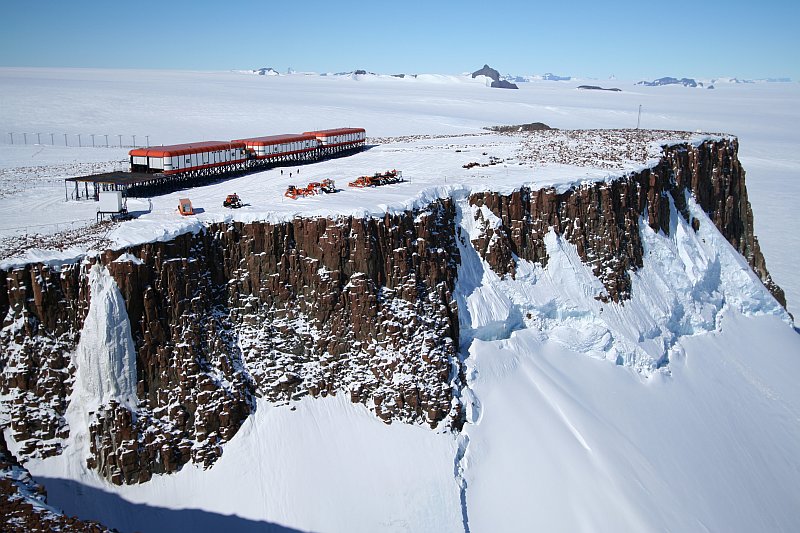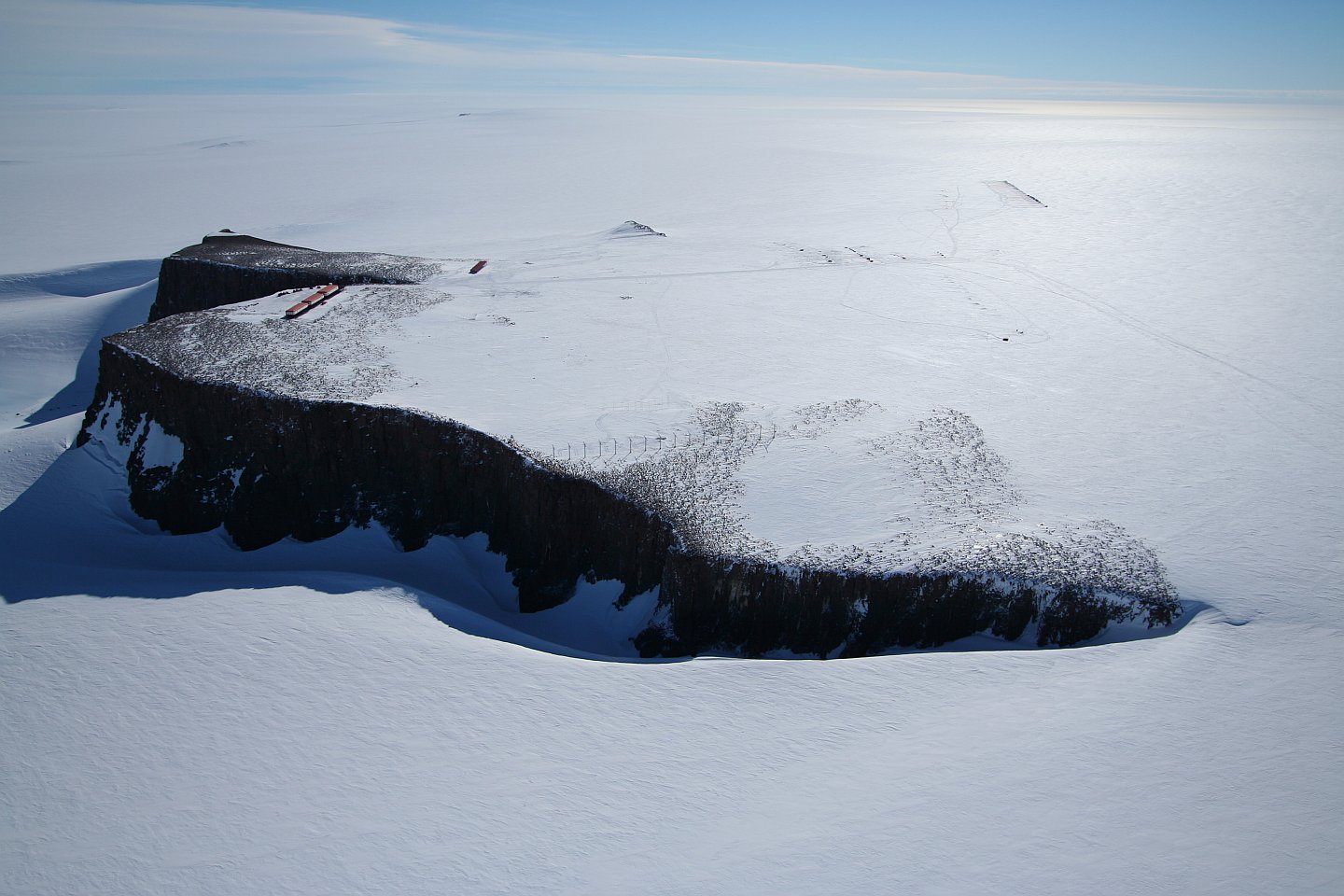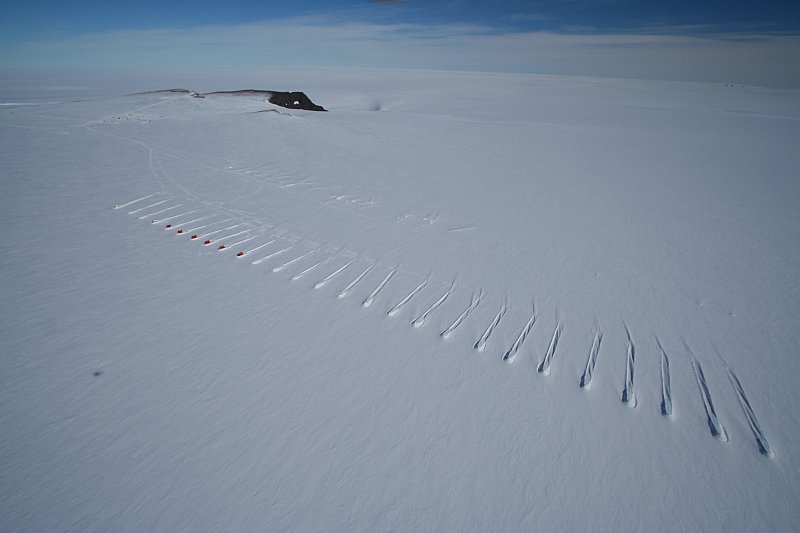SANAE IV – Physical Environment
Location
The current South African National Antarctic Expedition research base, SANAE IV, was built on the summit of a nunatak (mountain projecting through the surrounding ice) known as Vesleskarvet, at S 71°40â?? W 2°51â??. ‘Vesles,’ as we call it, means “little barren mountain” in Norwegian, and consists of two buttresses that are conspicuous due to their flat tops. The base itself is constructed on the larger and more accessible Southern Buttress, while the Northern Buttress is a scientific exclusion area dedicated to geological and biological research.  The prevailing wind is from the east and southeast, which has over centuries created an enormous hollow, or â??wind-scoopâ? on the western side of Vesleskarvet.  Although it may seem short-sighted to build a base right on top of the mountain and so close to a 200m cliff, it is precisely with this in mind that the base was designed.  Built on stilts, the blown snow cannot build up over time as it is swept over into the wind-scoop and beyond, sparing SANAE IV from being buried beneath the ice.

To the south and west of the base on the Southern Buttress lies the second scientific exclusion area, which is home to most of the monitoring equipment â?? the readily visible HF antenna array, the riometers, magnetometers, interferometer, VLF antenna, etc. Â Northwest of the base, at the western end of the Northern Buttress, lie the diesel bunkers used to store fuel for the long winter. Â Further northwest are the small summer depot, and more distant winter depot. Â The depots are placed far from the base so that the snow accumulation caused by the containers does not have and effect on Vesleskarvet itself.

